-
Posts
202 -
Joined
-
Last visited
-
Days Won
5
Content Type
Profiles
Forums
Blogs
Gallery
Events
Store
Posts posted by Christian1962
-
-
-
9 hours ago, Farkas said:
Thanks Christian
I'm happy with that.
----
on your bar the German 'Hindenburg' precedes the Hungarian at the end.
But not german obviousy (?)
Were there rules on German awards having precedence?
i don't think my Grandfathet collected his 'Hindenburg'. If he had, would it have been in the middle preceding his Austrian and Hungarian 'campaign' medals and after a Karl Kreuz and tapfer' ?'
tony
Yep, your are right. The precedence was MVK, MVM, TKM, KTK, Hindenburg, Austrian commemorative medals (1914 - 1918, 1912-13), hungarian war medal, bulgarian war medal.
Look at another example....
Kindest
Christian
0 -
Some remarks:
Militärverdienstkreuz was just for officers.
It must be a german officers bar. An austrian officer serving with fighting troops in WW1 would have owened a Militärverdienstmedaille Silber (in most cases) and Bronze in addition. And a Karl-Truppenkreuz. As you can see on the attached pic. Thats a very common type of bar with exeption of the "Kriegsmedaille 1873" which was quite rare in WW1.
Militärverdienstkreuz 3. Klasse was the lowest decoration which was awarded to foreign officers in WW1. They did not receive any Militärverdienstmedaille or Karl-Truppenkreuz.
Kindest
Christian
1 -
Historical items have a starting price about 350,- €, as you can see here (and the difference in quality):
Christian
0 -
I have never seen such a cheap and lousy copy. Maybe a Göde?
Kindest
Christian
0 -
-
Here a late war case for MVK III/KD/Schw. from Köchert, Wien:
Here a nice example for a "Kleine Dekoration zum MVK II./KD/Schw. with luxury case and owners inscription on backside:
And a "Kleine Dekoration zum MVK I./KD/Schw."
And a MVK III./KD/Schw. three times awarded.
Only 11 awards from 22.7.1918 to 1.10.1918 in the k.u.k. Armee, k.k. Landwehr and k.u. Honved!
1 -
On 09.10.2011 at 22:03, Iver said:
..there was no II. Class MVK without War Decoration awarded as far as I know..
Only one award is known to
Feldmarschallleutnant d.R. Karl Edler von Strasser, commander of the Militärakademie Wr. Neustadt
on 19.12.1915 [PVBL. 215/1915]
But Strasser already owned MVK III./KD therefore he would have worn an MVK II./KD III.
Following the Personalverordnungsblatt für das k.u.k. Heer (Landwehr and Honved included) there were (minimum number) awards:
MVK II./KD: 166 (until establishing the swords, some swords awarded later to them)
MVK II./KD/Schw.: 147 (after establishing the swords)
An interesting detail: GdK Fürst Schönburg-Hartenstein was awarded MVK II./KD on 20.4.1915 and MVK III./KD/Schw. on 1.9.1918. Therefore he would have worn MVK II./KD/ and "Schwerter niederen Grades"
Not included: k.u.k. Kriegsmarine (if there were any?) and awards by Heller-Kommission after WW1.
And very important: not included awards to foreigners (they were not published in PVBl.).
Regards
Christian
Here a MVK II./KD/Schw. nied. Grades
0 -
3 hours ago, Dario_Cro said:
Is is ususal than non officiers to wear sabre?
As I know tha sabre belongs to officers? Don't know really

yes, it was.
0 -
-
Köbe Karl (*29.11.1873 – 00.05.1944)
KuK:
01.09.1894 Leutnant (FJB 22)
01.05.1914 Major [56] (FJB 16 beim TKJR 3) [PVBl. 19/1914]
07.10.1914 ern. zum Kommandanten des FJB 22 [PVBl. 69/1914]
24.12.1914 Orden der Eisernen Krone 3. Kl. mit KD [PVBl. 105/1914]
15.04.1915 Militärverdienstkreuz 3. Kl. mit KD [PVBl. 55/1915]
01.11.1915 Oberstleutnant [44] (FJB 22) [PVBl. 180/1915]
24.07.1916 Ritterkreuz des Leopoldordens mit KD [PVBl. 137/1916]
03.01.1918 Orden der Eisernen Krone 2. Kl. mit KD.X [PVBl. 6/1918]
01.11.1918 Oberst [84] (Kdt. FJB 22) [PVBl. 205/1918]
ÖBH1:
01.05.1921 einget. beim IR 3
21.06.1921 ern. zum Kommandanten IR 3
01.09.1922 vers. zum 2. Brig.Kdo
16.06.1923 vers. zum 1. Brig.Kdo
01.08.1923 ern. zum Kommandanten der 1. Brigade
18.01.1924 Generalmajor d.R. (Titel) [VBl. 3/1925]
31.01.1924 Ruhestand [VBl. 3/1924]
EKO.2.X, LO-R.X, EKO.3.X, MVK.3.X, MVK.3., SMVM.X (PVBl. 83/1918), BMVM.X (PVBl. 178/1915), BMVM, KTK, VerwM, JK1908, JM1898, RK preuß. Kr.O., preuß. EK2 (PVBl. 118/1915)
Do you own the pic yourself? I would be interested in a good scan for my collection.
Kindest
Christian
0 -
Frank Adolf Dr. (14.06.1901 – 12.09.1939)
ÖBH1: Zugsführer
15.08.1929 Wachtmeister (HSch) [VBl. 10/1929]
01.10.1929 vers. zur InfFachSch [VBl. 15/1929]
15.08.1930 Leutnant [28] (AJR 9) [VBl. 10/1930]
01.09.1934 Oberleutnant [VBl. 20/1934]
26.03.1935 Silbernes Verdienstzeichen [VBl. 4/1935]
01.09.1935 vers. zum IR 11 (Bruck a.d. Mur) [VBl. 14/1935]
01.11.1937 vers. zum AJR 10 [PVBl. 13/1937]
DWM:
14.03.1938 übern. als Hauptmann mit RDA 1.4.1937 [103] (Chef 2./Geb.Jäg.Reg. 137)
01.10.1939 Major [posthum]
12.09.1939 gefallen bei Borownica (PL) [1400]
Silbernes Verdienstzeichen des österreichischen Verdienstordens, Dienstzeichen für zeitverpflichtete Soldaten 2. Kl.
0 -
no, is not. We have tried for many times. His decorations are too common.
Regards
Christian
0 -
I could identify now:
Otto Ritter von Berndt, 14.8.1914 Generalmajor (therefore not lisited as GSO), from Sept. 1916 Generalstabschef of 4th (!) army.
Broucek, Ein General im Zwielicht, Vol. 1, p. 299.
Regards
Christian
0 -
I would read it as:
Ing. Hans Lisberg oder Lieberg.
It´s quite interesting. His medals Show that he was Militärbeamter or civil serveant in the armed forces (40 years service medal) and that he was a Reserveoffizier who became quite well decorated in WW1. It´s an ebay-pic from richdaw - isn´t it?
Regards
Christian
0 -
Hi Dave,
are you sure all should be Austrians?
I could find Bogun von Wa(n)genheim als preuß. Hauptmann in 1892.
Bernds, Armeegeneralstabschef beim II. Armeekommando (I could not find him too)
von Bogun, Generalstabsoberst beim II. Armeekommando (no find)
Anber Erich, Rittm. im 1. Drag.Regiment, persönl. Adjutant des Korpskommandanten (no find)
Roday Erich, Oberstabsarzt und Sanitätschef des 9. Korps (no find)
I tried to find out in Haus-, Hof- und Staatshandbuch 1918, Landwehrschematismus 1913 and Schematismus für das k.u.k. Heer 1916.
Bernds could be Berndt? There are listed some of them in S 16.
When does the list date?
Regards
Christian
0 -
the upper right is Erzherzog Eugen.
Regards
Christian
0 -
On 08.12.2013 at 11:03, Odulf said:
Hi, here are some more Details referring Anton Schott:
Schott Anton (*21.04.1878 – 19.01.1941)
ÖBH1: Oberleutnant
21.06.1923 vers. z. Garnisonswirtschaftsamt Salzburg [VBl. 26/1923]
10.07.1923 Verpflegsoberoffizial (Titel) [VBl. 30/1923]
30.12.1926 Wirtschaftshauptmann (DragSchw 6)
01.08.1932 vers. zum AJB 3 [VBl. 7/1932]
18.01.1933 Wirtschaftsmajor [VBl. 1/1933]
31.01.1933 Ruhestand [VBl. 1/1933]
GTM, STM1, SVK.+K.K, SVK.+K, BTM, KTK, D2, JK1908, preuß. KVM
Regards
Christian
0 -
Here some Basic data:
Rzeszut Anton (*05.08.1889)
ÖBH1: 20.11.1918 Volkswehr-Leutnant (VwBaon Schtz.R. 1)
01.05.1924 Oberleutnant
27.01.1931 Hauptmann (IR 4) [VBl. 1/1931]
24.04.1931 Silbernes Verdienstzeichen [VBl. 5/1931]
01.03.1932 vers. zur HSch [VBl. 2/1932]
01.01.1933 vers. zum IR 4 [VBl. 12/1932]
23.07.1936 Militärdienstzeichen für Offiziere 2. Klasse [VBl. 8/1936]
01.01.1938 Major (Trp.O, IR 4) [PVBl. 15/1937]
DWM:
30.03.1938 vers. zum TJR (Wien) [PVBl. 4/1938]
01.10.1937 Major E (RDA) ( Stab WBK Ried/Innkreis)
01.08.1941 Oberstleutnant
SV, STM2, VerwM2, OD2, D3, ÖKM.X, sVM-RK.KD
Funktionär der „Freien Vereinigung sozialistischer Militärgagisten“ [MAH, 31]
and here some more detailed:
Rzeszut Anton
geboren: 05.08.1889 in Wien
verstorben: unbekannt
Religion: römisch-katholisch
Heimatberechtigt: in Wien seit Geburt
Schulbildung: Volksschule, Bürgerschule, Handelsschule, freies Lyzeum, alle in Wien
Zivilberuf: Privatbeamter
Familienstand verheiratet; Vater: Eisenbahner
Sprachkenntnisse: k. A.
Besondere Fähigkeiten: k. A.
Militärische Laufbahn:
k.u.k. Armee: 07.10.1910 – 22.09.1913 eingerückt als Infanterist, ab 01.08.1914 aktiv
ehem. Truppenkörper: k.k. Schützenreg. Nr. 1
Patrouillenkurs, Signalkurs, Skikurs
Volkswehr: 20.11.1918 Volkswehrleutnant (Rangzahl 2) beim VwBaon Schtz.Reg. 1
Bundesheer: als Leutnant übernommen (19500)
01.05.1920 gereiht in die BG 10 (Dienst des ZugsKdt im Verbande)
01.07.1920 Oberleutnant (Titel)
01.05.1921 definitiv als Offizier beim IR 2 eingeteilt
06.08.1923 ernannt zum Oberleutnant (Rangzahl 23)
01.05.1924 eingereiht in die VII. DKl.
01.07.1925 vorgerückt in den VI. DKl.
1916 - 1927 Garnisonsreitkurs („gut“)
27.01.1931 ernannt zum Hauptmann
01.03.1932 versetzt zur Heeresschule
01.07.1932 vorgerückt in die V. DKl.
03.10.1932 dienstzugeteilt zum IR 4
01.01.1933 versetzt zum IR 4
1937 Fortbildungskurs für Hauptleute („sehr entsprechend“)
01.01.1938 ernannt zum Major
Dt. Wehrmacht: 30.03.1938 versetzt zum III./TJgR
erhält neues RDA als Major 01.10.1937 (60)
01.08.1941 befördert zum Oberstleutnant E (11) beim W.B.K. Ried/I.
Verwundungen: Handstreifschuss, Schrapnellverletzung am Fuß
Auszeichnungen: SV, STM2, KTK, VerwM, D3, silb. EM-RK, ÖKM.X
Zitate: VBl. 2/1918 Staatsamt für Heerwesen v. 22.11.1918, Offizierskartothek,
Schematismus 1928 – 1938, Keilig, Rangliste S. 239 (hier RZ 76 bei Obstlt),
RL1939 (hier Major E mit RZ 13)
Regards
Christian
0 -
0
-
The cross is called "Offiziers-Ehrenzeichen vom österr. Roten Kreuz mit Kriegsdekoration", established in 1914 and bestowed until 1918.
There were different makers like R. Souval in Vienna and G.A.S. (Gebrüder Scheid Budapest). In most cases you can see the maker with help of the hallmarks on the backside.
Regards
Christian
0 -
Hi Ian!
And I can give him a Name too: Jakob BURG, Generalinspekteur der Gendarmerie.
Regards
Christian
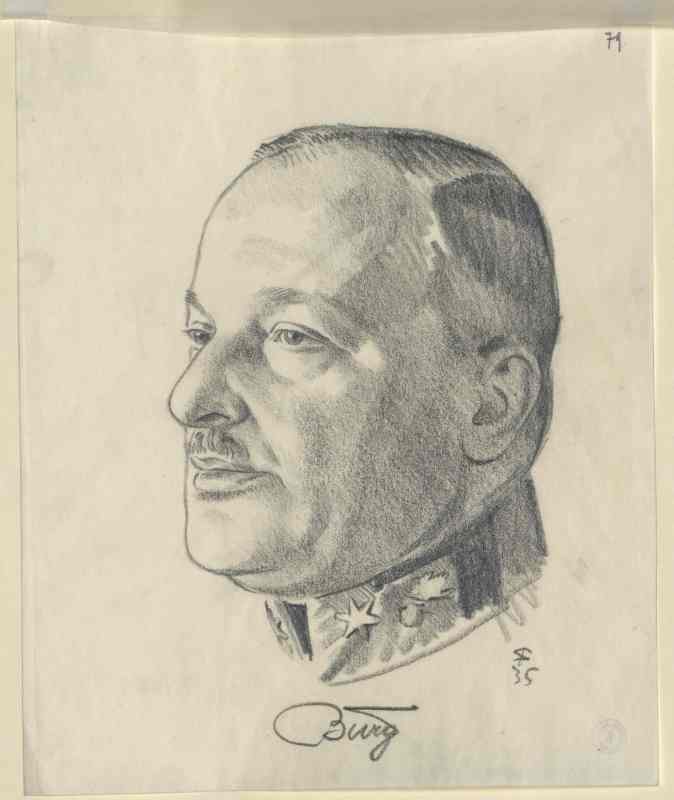 0
0 -
Hi!
I am just a newbie here in this forum. My special interest are Austrian Generals and austrian officers serving as german generals in WWII.
The pic here shows a "Gendarmerie-General" and not a Bundesheer general.
Kindest regards
Christian
0



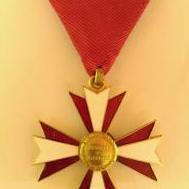




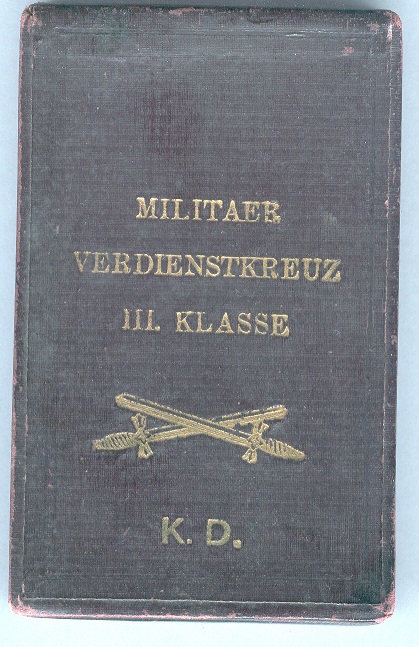

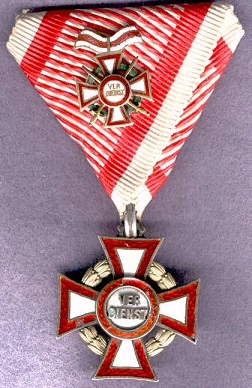
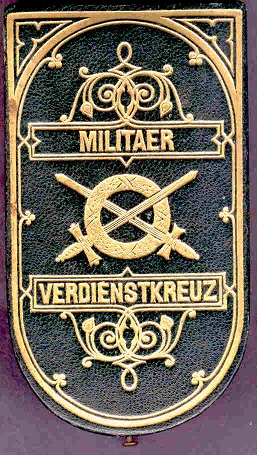
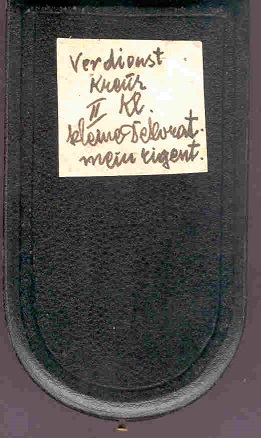

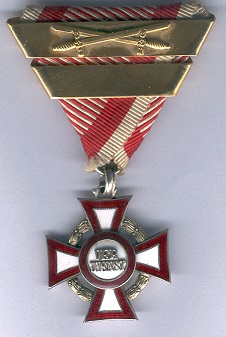

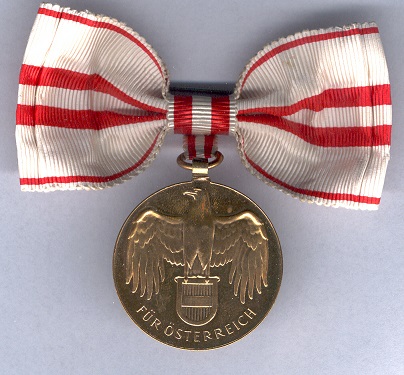

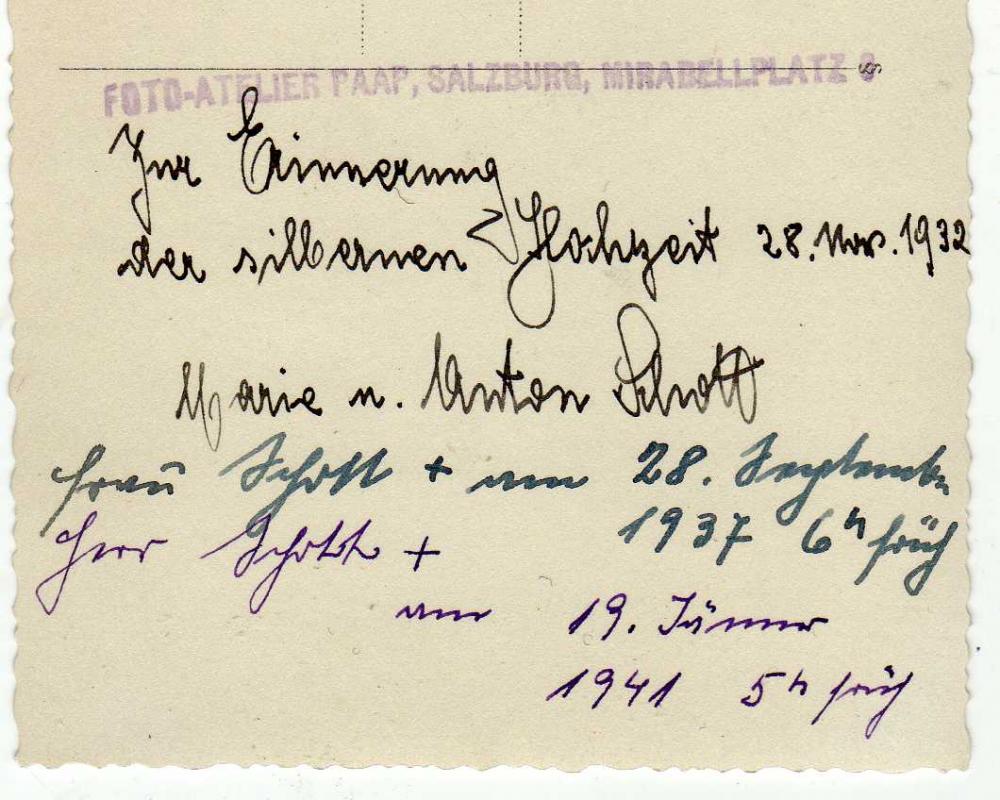
Order of the Iron Crown
in Austro-Hungarian Empire
Posted
One collar was sold some years ago for 90.000 (incl. all) at Dorotheum Wien. It was gold.
You have to be careful, there are semi-copies made from original parts combined with fake parts. They are of modern hungarian origin. They produce two collars out of one with casted elements.
Kindest
Christian